Small nuisance or major home damage?
From broken pipes to leaking appliances, water damage can wreak havoc, destroying a home, personal property, and irreplaceable family heirlooms. In many cases significant water damage can be avoided with routine maintenance and assistance from qualified contractors. Early detection could mean the difference between a simple mop-up job and major construction repairs.
Water leaks can happen anywhere in the home, but they occur most frequently in kitchens, bathrooms and laundry rooms. Whether it’s a slow drip or a sudden burst, water leaks can cause extensive damage.
In the kitchen.
Dishwasher – Check under the sink to see if the hose connection to the water supply line is secure and is not leaking. Check around the base of the dishwasher for evidence of leaks. Look for discolored, warped, or soft flooring materials or water damage to nearby cabinets.
Refrigerator – If your refrigerator has an icemaker, check the hose connection to make sure it is securely attached to the water supply line. The wet spot you see on the floor near the refrigerator may be melted ice cubes or it may be a crimped icemaker line about to burst.
Sink – Recaulk around sinks and pay attention to slow-draining pipes. This may indicate a partially blocked drain. Check the pipes under the sink for signs of water leaks.
In the bathroom.
Showers and Bathtubs – Discoloration or soft areas around floors and walls near showers or bathtubs may be your first indication there is a leak. Check caulking at joints where the walls meet the floor or the bathtub, looking for cracks or mold. If either is found, clean and remove loose material and apply new sealant. If the shower walls or floor are tiled, a leak may develop if there are cracks or missing areas of grout.
Sinks – Check under the sink for signs of leaks from water supply lines or drain pipes.
In the laundry room.
Washer – Check your clothes washer connections to both hot and cold. Also check the hose attachment to the washer itself and make sure that the hose is properly secured and draining into your sink or laundry tub.
Sink – If you have a sink in your laundry area check the caulking and repair if necessary. Also make certain that any lint is being captured and disposed of so it doesn’t begin to clog your pipes and cause a back up.
Bob Beisbier, owner of BK Home Inspection, is a Certified Master Home Inspector who has been providing professional and thorough home inspections in southeast Wisconsin for over 12 years. Bob is Infrared certified, DILHR Certified, and provides Home Energy Tune-ups, Environmental Data Reports, Pre-sale Home Inspections and Pre-offer Home Inspections.






